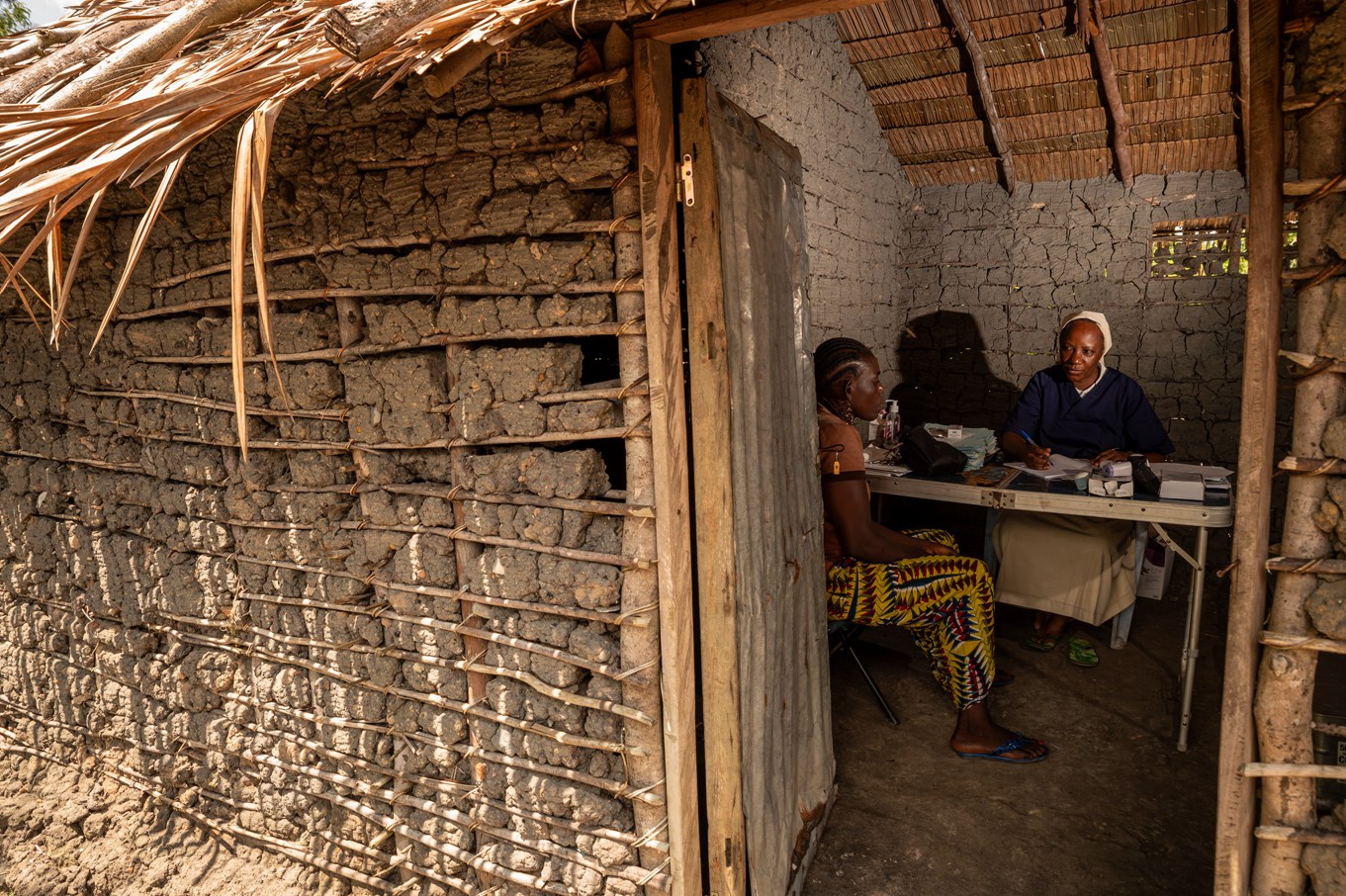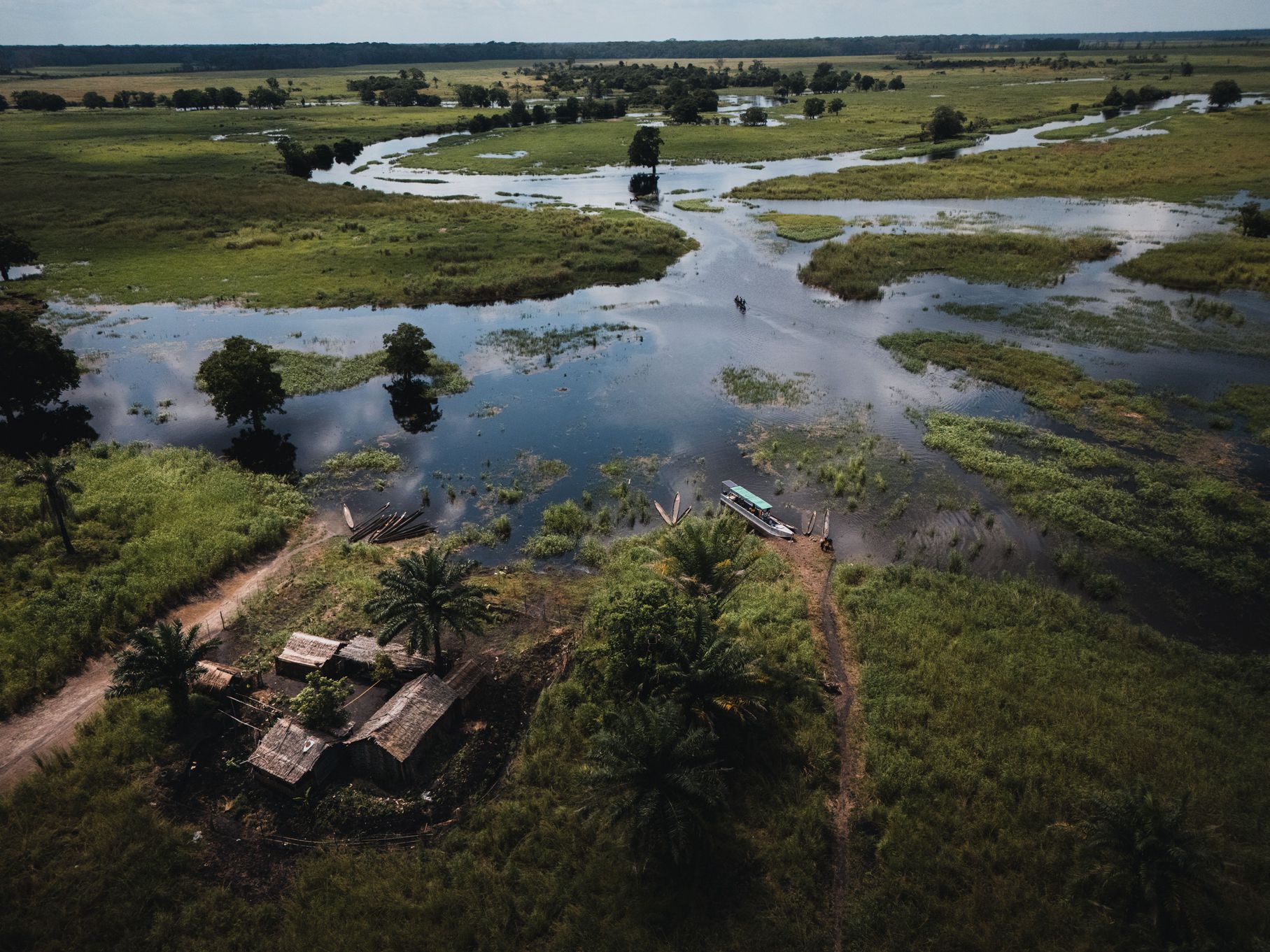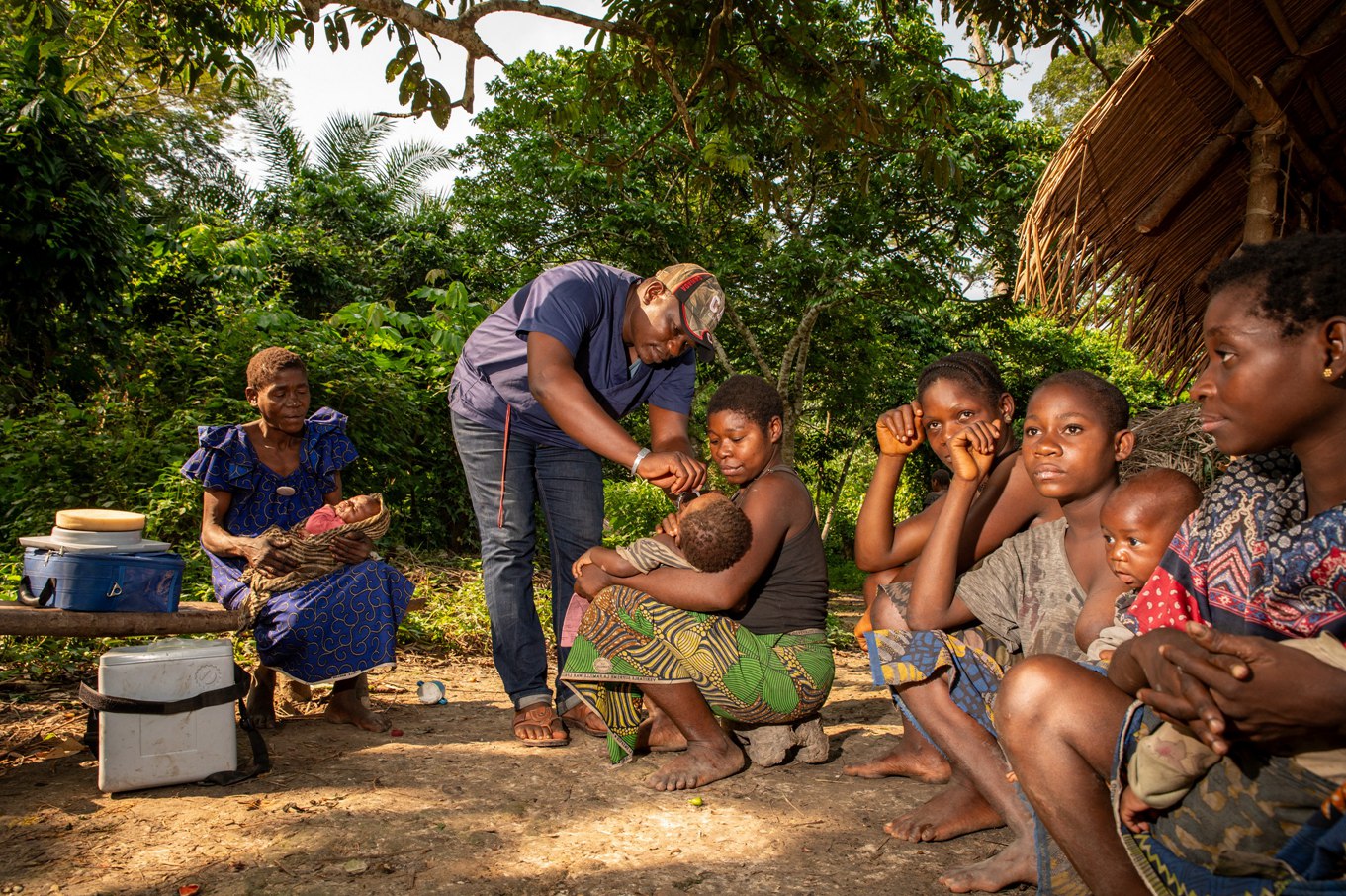From the Tarmac to the Pirogue
Text by Julien Pannetier
Photos by Nicolas Mathys/Zeppelin
Abridged by Syharn Shen (沈思含)
From the Tarmac to the Pirogue
Text by Julien Pannetier
Photos by Nicolas Mathys/Zeppelin
Abridged by Syharn Shen (沈思含)

A local bus is pushed through the mud between Impfondo and Epena, a stretch notorious for its poor conditions.
The horizon vanishes into the African night as Richard slows his pirogue on the flooded Likouala-aux-Herbes River. It's November, and the river spills into fields, hiding traps beneath the water. Aboard the boat, four passengers share a mission: reach the next remote village and bring medical care. Their last stop took longer than expected, but Sister Ginette, her eyes tired yet bright, smiles. "Thirty-three patients in a day—that's a solid result!"
Each month, this team visits fourteen villages around Epena in northern Congo, where roads disappear into rainforest. Their free consultations are a lifeline in places unreachable by road. Behind them stands the Association de l'Amour Vivant (ASLAV), a French NGO supporting twenty health centers in Congo since 2005. Most are Catholic-run. ASLAV trains health workers, provides medicine, and delivers basic equipment.
The supplies begin their journey in Belin-Beliet, France, where volunteers like nurse Margot collect donations—syringes, gauze, bandages, pumps, wheelchairs. Volunteers sort them into three annual shipments. Aviation Sans Frontières then steps in, placing up to ten 8-kilo parcels on Air France flights each week. In 2024, over 6,000 packages reached 24 countries.
At Brazzaville's Maya-Maya Airport, ASLAV's Lazare receives the shipments under sweltering skies and drives them north. Trust is crucial—these precious boxes often pass through many hands. "More intermediaries mean more risk," says coordinator Edouard Gonnu, who frequently visits the field to ensure proper delivery.

Sister Ginette consults a patient in a clay hut repurposed as a temporary clinic.
In Congo's capital, Sister Lucie runs the Sister Martin Health Center despite constant blackouts and water cuts. She continues her work by candlelight, using a microscope to test blood for malaria. "ASLAV's support is essential," she says. Meanwhile, Sister Ginette gathers supplies, adding medicines from Congolese wholesalers—a necessity amid chronic shortages and a flourishing black market. She must also chase fuel, a scarce commodity that delays travel and outreach.
Once stocked, she heads north to Epena by 4×4, bumping through deep ruts before reaching ASLAV's aluminum boat. The pirogue team includes two nurses, a vaccinator, a multi-skilled agent, and a French doctor every three months. For ten days, they travel village to village, sleeping in tents pitched beside mud-brick homes or inside classrooms.

ASLAV's pirogue docks near a village, depending on water levels to get as close as possible.
In Itanga, patients gather beneath a great tree. Sister Ginette pulls medicine from a trunk. "Malaria is our main concern," she says. "It's the leading cause of death for children." Others come for checkups or to show support—like the village chief, whose presence encourages others. Cedric updates vaccine records: tuberculosis, diphtheria, polio, and more. Vaccines are cooled in solar-powered fridges aboard the boat.
Nearby, Remys weighs babies from a scale tied to a tree. "We're fighting malnutrition," he says, studying growth curves. Most cases are treatable on-site, but severe ones are referred to the health center or, if necessary, to the hospital in Impfondo—a journey that can take days. In emergencies, the pirogue becomes an ambulance.
Sometimes rain halts their work. One storm traps the team in their tent. "Patients wouldn't come in this anyway," Ginette shrugs, bailing water. But once it clears, villagers reappear. "I'll see you after the fields," calls one woman, firewood on her back.
Villages grow cassava, crush peanuts, smoke fish. It's a jungle garden of kapok trees—sacred to some, shaped into boats by others. But water also brings risk. Shallow wells are easily contaminated, and river water used for cooking and bathing can spread disease.

Cedric Salassala administers antiparasitic treatment to Baka children and mothers.
In the far north, the team reaches the Bakas, an Indigenous group known for wild honey and pepper, but often exploited or pushed into poaching. Facing discrimination and poor access to healthcare, they receive free treatment. That morning, families gather. Sister Ginette tends infections, updates vaccines, hands out antiparasitics and paracetamol.
In a palm hut, Marie-Solange checks a pregnant woman. No ultrasounds here; most births happen in the village. Yet hardship turns to joy. The Bakas celebrate the boat's arrival with makeshift drums and dancing. Sister Ginette joins in—the heroine of the day, aboard a vessel that bridges worlds.
Contact Us | Plan a Visit | Donate
8 Lide Road, Beitou 11259, Taipei, Taiwan
886-2-2898-9999
005741@daaitv.com
©Tzu Chi Culture and Communication Foundation
All rights reserved.
